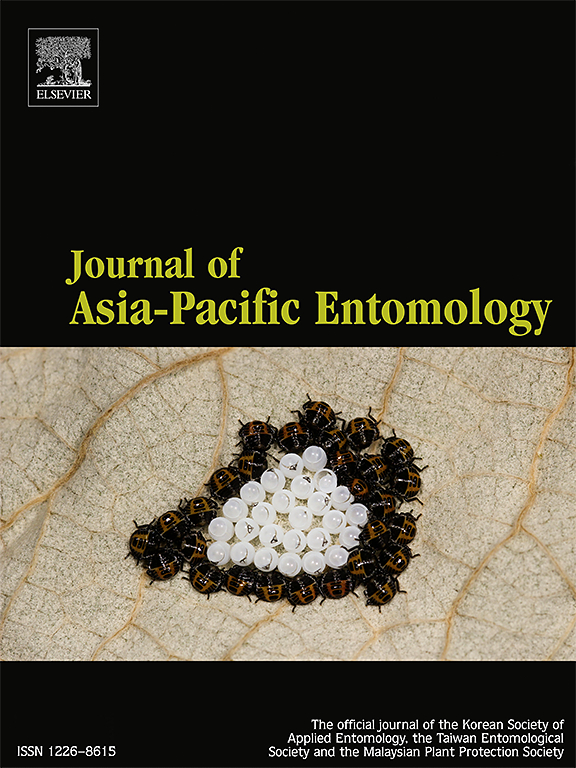Botanical pesticides as sustainable alternatives for managing lychee fruit borer (Conopomorpha sinensis): Balancing pest control and biodiversity Conservation
IF 1.3
3区 农林科学
Q3 ENTOMOLOGY
引用次数: 0
Abstract
Conopomorpha sinensis Bradley (Lepidoptera: Gracillariidae), commonly known as the lychee fruit borer, is a major pest that severely impacts lychee production, causing significant fruit damage and economic losses. Although chemical pesticides, such as beta-cypermethrin, are effective in controlling this pest, their extensive application raises critical issues, including environmental pollution, pest resistance, and a decline in biodiversity within orchard ecosystems. This study evaluated botanical pesticides as sustainable alternatives to chemical controls. Field trials showed that the combined application of rotenone and azadirachtin provided the highest efficacy—exceeding 80% at multiple time points—and significantly reduced fruit infestation compared to beta-cypermethrin. Furthermore, eco-friendly pest management strategies involving botanical pesticides enhanced arthropod biodiversity, supported natural enemies, and contributed to effective pest regulation, thereby fostering a more balanced and resilient agroecosystem. These findings underscore the benefits of adopting botanical pesticides as a sustainable pest management strategy, offering effective control of C. sinensis while preserving ecological health. This approach provides a promising pathway toward sustainable and environmentally responsible lychee production.

植物性农药作为管理荔枝果螟的可持续替代品:害虫控制与生物多样性保护的平衡
荔枝果螟(Conopomorpha sinensis Bradley,鳞翅目:细蛾科)俗称荔枝果螟,是严重影响荔枝生产的主要害虫,造成重大的果实损害和经济损失。虽然化学农药,如高效氯氰菊酯,在控制这种害虫方面是有效的,但它们的广泛使用带来了严重的问题,包括环境污染、害虫抗性和果园生态系统生物多样性的下降。本研究评价了植物性农药作为化学控制的可持续替代品。田间试验结果表明,鱼藤酮与印楝素联用的防治效果最高,在多个时间点的防治效果均超过80%,且与高效氯氰菊酯相比显著降低了果实侵染率。此外,包括植物性农药在内的生态友好型有害生物管理策略增强了节肢动物的生物多样性,支持了天敌,并有助于有效地控制有害生物,从而促进了更加平衡和有弹性的农业生态系统。这些研究结果强调了植物性农药作为一种可持续的害虫管理策略的好处,即在保护生态健康的同时有效地控制中华绿僵虱。这种方法为可持续和对环境负责的荔枝生产提供了一条有希望的途径。
本文章由计算机程序翻译,如有差异,请以英文原文为准。
求助全文
约1分钟内获得全文
求助全文
来源期刊

Journal of Asia-pacific Entomology
Agricultural and Biological Sciences-Insect Science
CiteScore
2.70
自引率
6.70%
发文量
152
审稿时长
69 days
期刊介绍:
The journal publishes original research papers, review articles and short communications in the basic and applied area concerning insects, mites or other arthropods and nematodes of economic importance in agriculture, forestry, industry, human and animal health, and natural resource and environment management, and is the official journal of the Korean Society of Applied Entomology and the Taiwan Entomological Society.
 求助内容:
求助内容: 应助结果提醒方式:
应助结果提醒方式:


